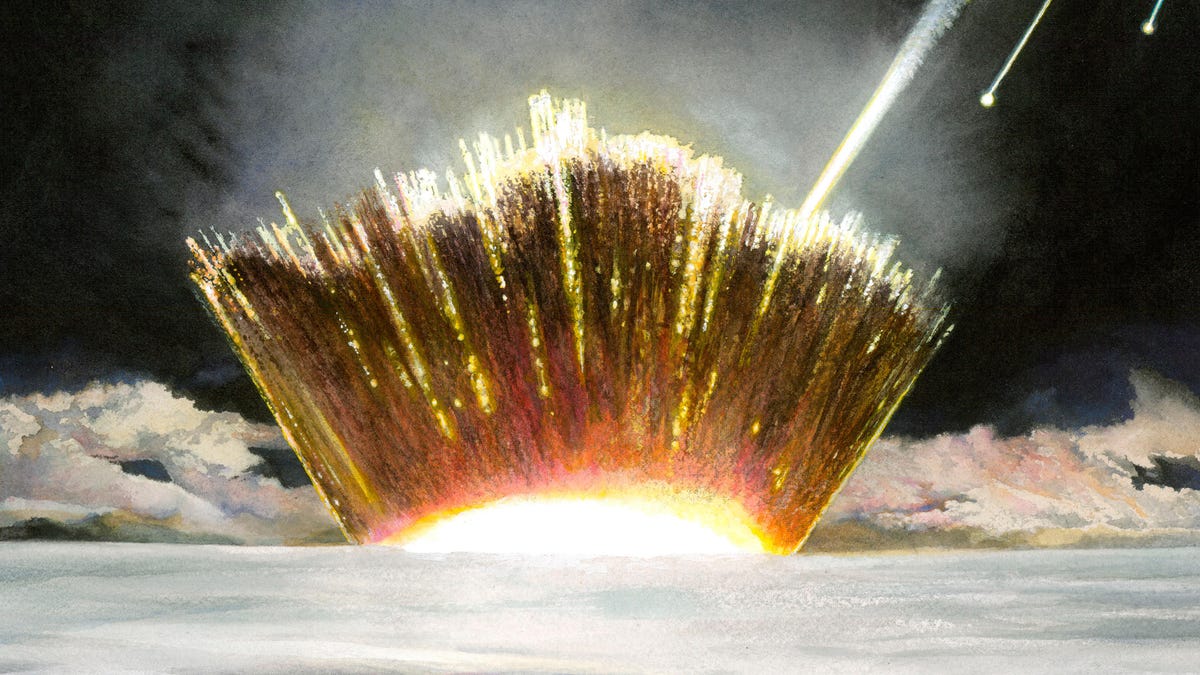Scientists uncover massive asteroid impact site under Greenland ice sheet
The remnants of an ice age asteroid that slammed into the Earth have been discovered under Greenland's Hiawatha Glacier.

Conceptual image of the asteroid slamming into Greenland's ice sheet.
A mile-wide, iron asteroid slammed into northern Greenland as early as 12,000 years ago, creating an impact site with an area similar to that of New York City.
The crater was discovered underneath the Hiawatha Glacier, a Greenland ice sheet 1 kilometre thick, after extensive radar surveys by a Danish group of researchers. Using data gathered by NASA programs mapping the ice, the Danish researchers spotted a peculiar semi-circular depression at the edge of the glacier in 2015.
"We immediately knew this was something special but at the same time it became clear that it would be difficult to confirm the origin of the depression," said Kurt H. Kjær, lead researcher on the study, published Wednesday in Science Advances.
To do so, the team had to map the crater themselves, but of course they couldn't just shovel all that ice out of the way. By using a German research plane with "next-generation radar" technology the team conducted a more thorough, focused analysis of the site, revealing the bowl-shaped contours of the crater.
But to confirm the crater was created by an asteroid, the scientists wanted some more physical proof. Sifting through the sand at the front of the glacier revealed shocked quartz, a form of quartz created by intense pressures, and other "impact-related grains".
The findings allowed the team to make some data-driven, preliminary predictions about what might have caused it: A mile-wide, iron-rich asteroid that collided with the Earth, penetrating some 7 kilometres into the crust.
The impact initially caused a cavity that was around 20 kilometres in diameter, before collapsing into the 800 metre deep, 31 kilometre-wide site we see today.
But when did the asteroid hit the Earth? The team aren't quite sure of that yet. They know it happened sometime in the Pleistocene, but that's an epoch that spans 2 and a half million years of history. Current estimates, based on the geological profile, seem to suggest that crater is quite young, but further analysis is required.
"This will be a challenge, because it will probably require recovering material that melted during the impact from the bottom of the structure," said Kjær.
Accurately dating the collision will provide future research with a better understanding of the consequences of such an impact and how it affected the environment on the Earth.
CNET's Holiday Gift Guide: The place to find the best tech gifts for 2018.
Best Black Friday 2018 deals: The best discounts we've found so far.

